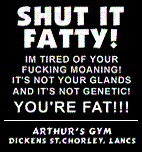Part 2
An argument might be that if used properly, knives, like cars, don't kill people. Unlike cars, however, a knife is just a truncated sword, which was designed to kill. So although intentioned for veggies, a knife looks exactly like something that was fashioned to slit throats. People can be quite creative with appliance usage. Some might even see it as a weapon.
Also different is that when drunk and angry, we don't jump in our cars and run people over. Most alcohol related fatalities are the inadvertant result of poor judgement.
What do we do then to help reduce these deaths? We add safety features. This covers all things from traffic lights and speed limits to airbags and improvements in force dispersement.
The key is that the full functionality of a car is maintained. We could drastically reduce fatalities by setting the speed limit at 20 mph, but then we have almost completely negated the whole advantage behind owning a car. What we want to target are features that contribute no additional function to the car, but present a possible hazard.
So back to knives, if we find that all cooking chores can be completed with knives no greater than "x" inches and that knives longer than "x" are highly associated with knife related deaths, then a "safety feature" might be to shorten knifes to a maximum of "x" inches.
Again, anyone with a reasonable need for a long knife should be able to own one. Like professional murders, they would obviously need a full 15 inch knife.
Rather than call it a ban on knives, call it a knife safety feature. The knife could come with the following disclaimer
"If you are drunk and angry, you are far less likely to fatally wound someone with this new "safety knife" than the conventional long knife."
Of course, that would bring out the "safety knife" brigade that would claim that less such a knife would encourage stabbing.
and, inexplicably wanton sex with vaccinated women.










 Reply With Quote
Reply With Quote













Bookmarks